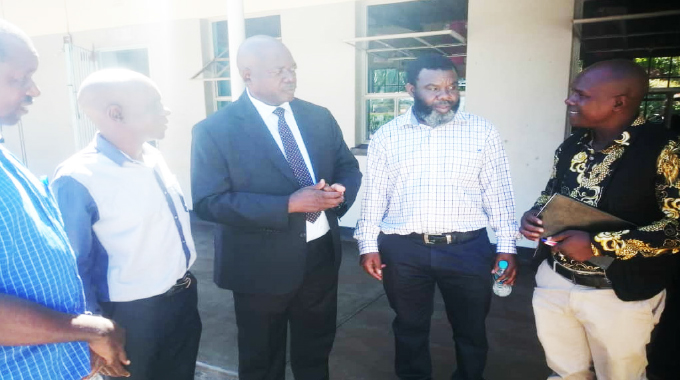Early warning system to counter school drop-outs on the cards

Michael Magoronga, [email protected]
A PILOT Early Warning System (EWS) is being rolled out to reduce drop-outs among secondary school learners through early detection.
The Ministry of Primary and Secondary Education is spearheading the project in collaboration with development partners.
This follows concerns over the increased number of drop-outs in Zimbabwe, which clocked 32 700 in 2021 and spiked to 50 744 in 2022.
The EWS concept uses red flags like absenteeism, gradual drop in performance, change in character among other factors as early warning signs that a child might end up not coming to school. The model was first validated in four districts in 2023.
During the validation workshop in Umzingwane District in March last year, the concept was endorsed and introduced in four districts including Mazowe, Bindura, Gwanda and Umzingwane.
Government has since identified five hotspot districts from across the country where the programme will be rolled out on a pilot basis before being rolled out in other districts.
Officials from the Ministry of Primary and Secondary Education in the five districts considered as hotspots in terms of school dropouts, met in Kwekwe for a training of trainers (TOT) workshop and official launch on Wednesday.
The five selected districts considered as hosts posts include, Gwanda (Matabeleland South Province), Makonde (Mashonaland West), Lupane (Matabeleland North), Mbire (Mashonaland Central) and Gokwe North in Midlands Province.
Of these, Gokwe North tops the ladder with 1 166 learners followed by Makonde with 1 108 while Lupane has 430 learners, Mbire 409 and Gwanda with 387 learners.
Officially launching the EWS project in Kwekwe, Primary and Secondary Education Minister, Cde Torerai Moyo, expressed shock at the school drop-out figures and urged every stakeholder to put shoulders to wheel to combat the challenge.
“Action must be taken and must be taken now. Let’s all work on retaining all our learners to class. We should have a target that in three years’ time, all of our learners should be back in class,” he said.

“These statistics are shocking and we need to act today.”
Cde Moyo said the detective system will help teachers and school communities to identify factors that lead to school drop-outs, particularly of girls at secondary level, as well as identify possible challenges for progression, survival and transition in schools.
“When the idea was mooted it was meant to cater for the girl child alone but it was later discovered that both males and females are affected hence it is now cutting across the gender,” he said.
“EWS is pinned on the growing evidence of the significant gendered social and economic returns of education for individual pupils in schools.
“It is also anchored on the philosophy that education is a right; education can protect; education is an essential investment in children’s development; and education can promote peace, stability and social cohesion.
“It is against this background, that identifying appropriate strategies that support pupils across gender from dropping out of school is important.”
The minister reiterated Government’s commitment to ensuring that the EWS practices are universal in all schools and not only limited to those few selected districts from where various projects are operating.
“Recognising that the Early Warning System will become a yardstick in the ministry on harnessing the involvement of all stakeholders in addressing school drop-outs at different levels, the reality is that it should be applicable to all pupils across gender and that its success will depend on the synergies between the partners who are already on the ground and the ministry throughout all its levels,” he said.
Notwithstanding significant progress in access to basic education over the past years in Zimbabwe, Cde Moyo said challenges persist in the quest to improve learning outcomes and equity.
These challenges are compounded by several global trends, which are having a profound impact on education systems, he said.
Climatic changes are causing increased challenges to systems, such as disruptions in learning and forcing children to leave school. Consequently, Covid-19 was also an unprecedented challenge to pupil drop-out, triggered by pressures on pupils during the period such as early pregnancies,” said the minister.
In line with the Government’s aspirations towards a relevant, quality and inclusive education, he said the ministry has made inroads towards introducing a curriculum, whose hallmarks are developing competencies desired in life and work.
“To this effect, the introduction and phased implementation of the Competence-Based Curriculum (2015-2022) has taken effect and has now been reviewed towards a Heritage-Based Curriculum,” said Cde Moyo.
“The idea is to transform the structure and curriculum of the country’s education system to adequately meet the evolving development aspirations.”

He said Vision 2030 looks to “building a new Zimbabwe, a country with a thriving and open economy, capable of creating opportunities for investors and employment. Ensuring access to education for all, providing adequate infrastructure, as well as opportunities for non-formal education are some of the key focus areas.”
The training exercise drew a lot from a four year (2017-2020) Longitudinal Study on Dropout and Survival in Zimbabwe Schools (2020), the EMIS 2022 data, ESPR 2021 and the Joint Sector 2022 findings, which all have been consulted to come up with this system.
Further to this, a situational analysis was conducted in September/October 2022 to understand pupils’ and stakeholder views on school drop-outs in Zimbabwe and understand the factors influencing dropout in secondary schools, particularly of girls and children with disabilities; barriers to girls’ education, strategies being adopted by schools and education partners to address the issue of drop-outs and to identify pupils at potential risk of dropping out.












Comments